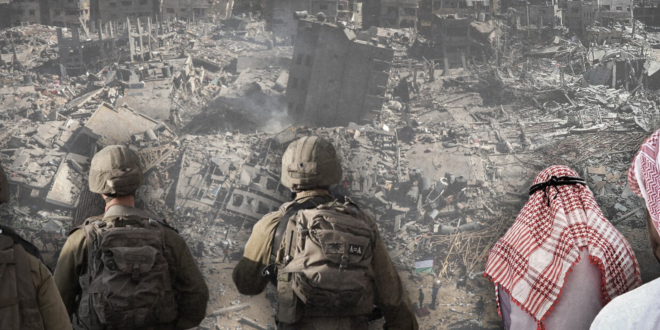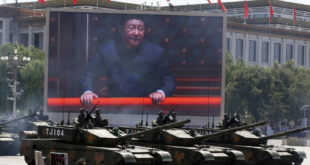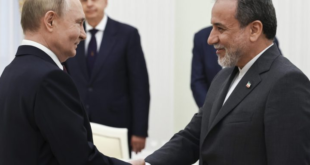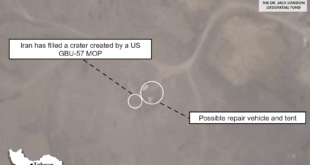Tel Aviv’s plan to launch a political phase in its ill-conceived Gaza war is likely to end in strategic disaster, just as US artificial constructs failed in Vietnam. One cannot simply sidestep complex social dynamics and strong local resistance to erect false leaders atop synthetic ‘bubbles.’
Lessons from Vietnam: Why Israel’s ‘Gaza security bubbles’ will fail
Tel Aviv’s plan to launch a political phase in its ill-conceived Gaza war is likely to end in strategic disaster, just as US artificial constructs failed in Vietnam. One cannot simply sidestep complex social dynamics and strong local resistance to erect false leaders atop synthetic ‘bubbles.’
On 23 June, Israeli Defense Minister Yoav Gallant began a three-day visit to Washington, DC, where he met with prominent US officials, including Defense Secretary Lloyd Austin and Secretary of State Anthony Blinken.
According to statements from the US Departments of State and Defense, Gallant’s discussions centered on three key issues: escalating tensions with Hezbollah on the northern front, the next phase of the Gaza war, and efforts to ease the strained relationship between Israeli Prime Minister Benjamin Netanyahu and the Biden administration, particularly over the former issue.
Lessons from Vietnam
Any effective post-war plan must realistically consider the conditions and power dynamics that have emerged from a conflict. The success of a “day after” strategy relies heavily on acknowledging and adapting to these realities. Ignoring them leads to impractical and unfeasible strategies that will lose a war – by way of political defeat.
A case in point is the US strategy in the Vietnam War, particularly the implementation of the Strategic Hamlet Program in the early 1960s. This program aimed to create “fortified villages” to reduce the influence of the North Vietnam-supported National Liberation Front (NLF) on rural villagers.
Despite its intentions, the program failed to account for the complex social and cultural dynamics of Vietnamese rural life. Forced relocations disrupted traditional lifestyles and agricultural practices, leading to widespread resentment, ultimately strengthening popular support for the NLF while reinforcing the notion of a people’s war.
Because US planners underestimated the NLF’s deep-rooted influence and support within rural communities, the program inadvertently pushed more villagers to support it. Naturally, the NLF exploited the program’s failures as propaganda, highlighting the incompetence of the US-backed South Vietnamese government.
To demonstrate that the US “fortified villages” lacked proper protection and adequate security, the NLF infiltrated these hamlets, undermining their intended purpose, exposing villagers to further danger, and reinforcing the belief that the puppet government was unable to protect its people.
The failure of the Hamlet Strategic Program can largely be attributed to its neglect of the cultural and social backgrounds of the Vietnamese people, which led to its abandonment by the mid-1960s.
Israel’s next phase in Gaza
Israel appears to have learned little from these past experiences. Despite American efforts to share its historical lessons to avoid repeating mistakes – such as those made post-9/11 – Israel’s post-conflict plans for Gaza suggest a determination to push ahead toward strategic failure.
According to the Washington Post, “The least visible, but perhaps most important, subject Gallant discussed during his visit was a detailed plan for postwar transition in Gaza.” The plan would proceed even if Hamas continues to reject unfeasible and unfavorable ceasefire proposals and the release of Israeli captives.
The plan reportedly includes the following components: The transition process in Gaza will be overseen by a steering committee led by the US and its allied Arab partners. An international force, potentially including troops from Egypt, Jordan, the UAE, and Morocco, will oversee security, with US forces providing command, control, and logistics support from outside Gaza, possibly in Egypt.
A compliant Palestinian force will also be established to gradually take on local security responsibilities. This Palestinian security force is expected to be trained under the existing security assistance program of the collaborative Palestinian Authority (PA), headed by US General Michael Wenzel, stationed in Jerusalem as the security coordinator for Israel and the PA.
The transitional plan will be implemented in phases, starting in northern Gaza and expanding south as conditions improve. Finally, the security “bubbles” will be expanded to eventually encompass 24 administrative districts in Gaza.
Bursting the bubble
Earlier this month, an article in the Financial Times hinted that Israel is preparing to test these “bubbles” for managing Gaza in the post-war phase. The pilot scheme for these “Hamas-free” bubbles will soon be launched in the Al-Atatra, Beit Hanoun, and Beit Lahia neighborhoods of northern Gaza. Notably, both the article and sources familiar with the plan express skepticism about the feasibility of this approach, with some even considering it an “imaginary project.”
The initial phase involves the occupation forces directing aid from the nearby western Erez crossing to vetted local Palestinians. These individuals will be responsible for distributing aid and gradually taking control of civilian governance in what’s left of Gaza.
Tel Aviv hopes that if this experiment proves successful, the “bubbles” can be expanded southward to other parts of Gaza, thereby replacing Hamas rule.
Under the full plan, PA officials and other local leaders inside Gaza would manage the new system, leading to the formation of a technocratic government. This local government will include representatives from the international and Arab coalition, the PA, private sector contractors, and businessmen.
Supported by the Israeli security establishment and Defense Minister Gallant, this strategy envisions the establishment of a comprehensive international and Arab coalition to provide the necessary support for a sustainable post-war regime in Gaza.
Security arrangements are also a crucial element of the plan. There are schemes to train a local Palestinian security force from inside Gaza, consisting of former PA security personnel who were trained in Jordan or the occupied West Bank under the supervision of General Wenzel.
Majid Faraj, head of Palestinian intelligence, has reportedly begun screening candidates for this security force and identified several thousand men as potential recruits.
According to Lebanese daily Al-Akhbar, citing Palestinian sources in Ramallah, the occupation state is openly coordinating with the Palestinian security services to “create a wide circle of communication with specific Gazan families, businessmen and local companies,” and the goal is to “form the nucleus of an alternative authority.”
Risk of repeating history
If Israel tries to implement the US “fortified villages” model through Israeli “bubbles,” it will likely run into the same problems as the Strategic Hamlet Program. A major reason for its potential failure is that Palestinian factions refuse to let any international or Arab force enter the Gaza Strip, viewing these troops as “unacceptable and tantamount to an occupying force.”
The Follow-up Committee of the National and Islamic Forces, which includes most Palestinian factions, clearly expressed this sentiment in a statement from March. Ignoring this reality and pushing forward with the “bubbles” idea would be a serious mistake. Moreover, any non-resistance Palestinian leadership to emerge from the scheme would likely be painted as “collaborators,” reducing any prospects of Gazans supporting their authority.
Despite Saudi Foreign Minister Faisal bin Farhan’s support for deploying an international force in Gaza through a UN decision to support the PA, Palestinian resistance factions have rejected this proposal.
The Popular Front for the Liberation of Palestine, for instance, reiterated that “the Palestinian people are the only body authorized to determine the future and form of the ruling authority in the Gaza Strip.”
Given the steadfast resistance of Palestinians in Gaza over nearly nine months of constant bombardment and Israel’s failure to achieve its declared war goals, coupled with Netanyahu’s unrealistic insistence on “achieving absolute victory,” it appears the Israeli government is heading toward another failure with its day-after plan for Gaza.
An opinion poll published last month by the Palestinian Center for Policy and Survey Research showed that 75 percent of Gaza’s population opposes the deployment of an Arab security force and that Hamas still garners significant popularity in the region.
Therefore, if the occupation state continues to deny the realities on the ground, it will likely add another failure to the west’s collective history of conflicts with local populations and struggles against people’s wars.
 Eurasia Press & News
Eurasia Press & News




